Windows 11 introduces Voice Access, a feature that allows users to control their PC entirely through voice commands. This hands-free approach is beneficial for individuals with visual impairments and for anyone looking to enhance their computing experience by operating their system without the use of a keyboard or mouse.
Unlike traditional speech recognition tools that only convert speech to text, Voice Access enables you to interact with the user interface elements on your screen. This means you can open applications, navigate through menus, and perform various tasks simply by speaking commands. It's an efficient way to multitask or to operate your PC when your hands are occupied.
Enable and set up Voice Access from Windows settings
Setting up Voice Access on your Windows 11 PC is a straightforward process that only takes a few moments.
Step 1: Open the Settings app by clicking on the Start Menu and selecting the Settings icon, or by searching for it using the search bar.

Step 2: In the Settings window, select the Accessibility tab from the left sidebar.
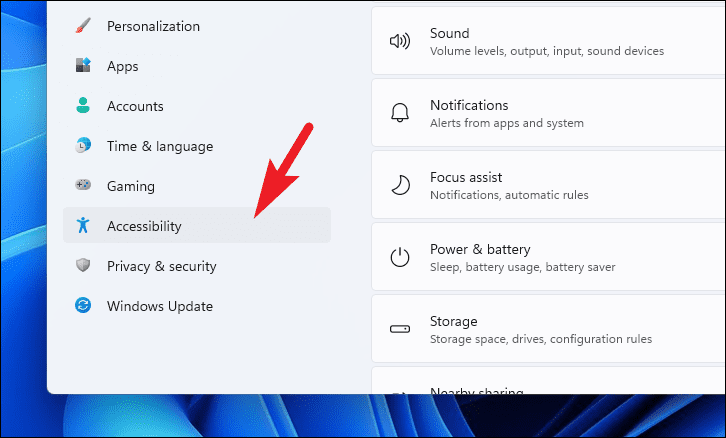
Step 3: Scroll down to the Interaction section on the right, and click on the Speech option.
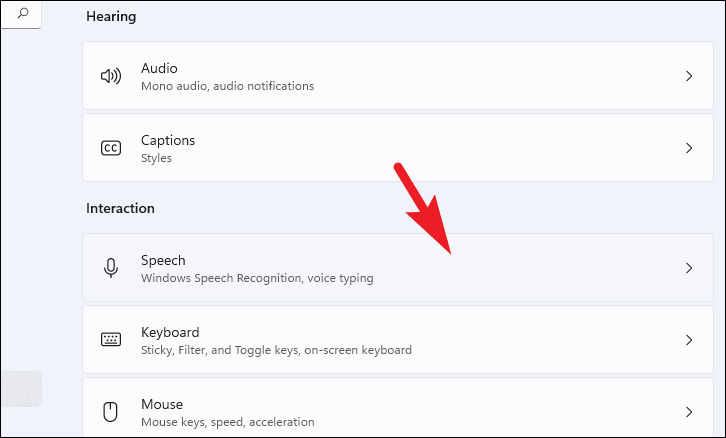
Step 4: In the Speech settings, locate the Voice access section and toggle the switch to turn it On.
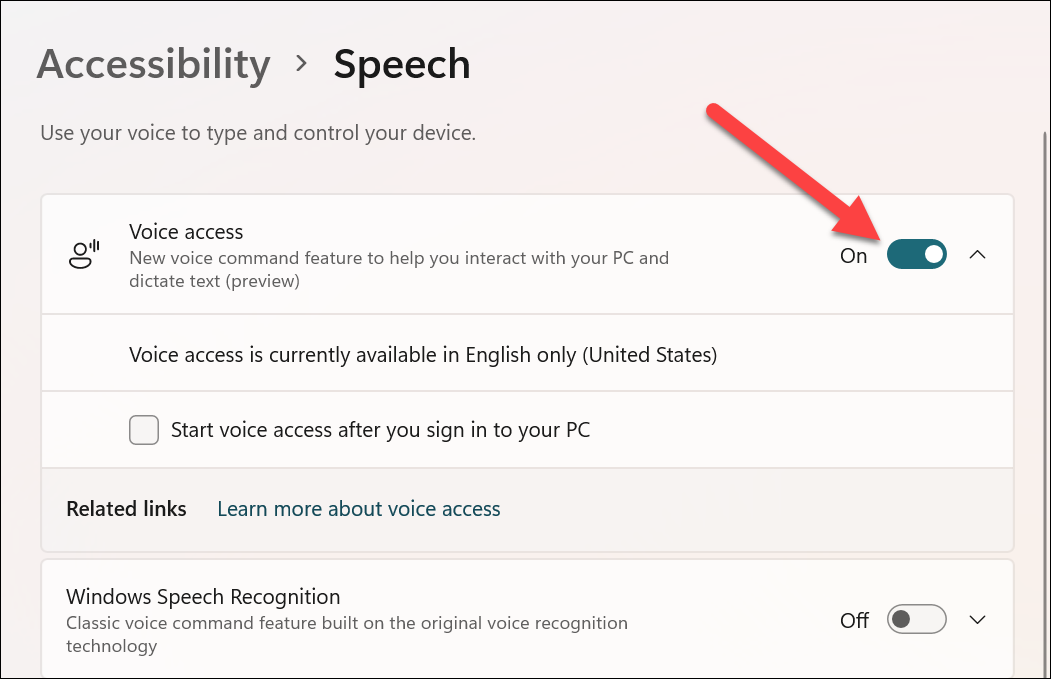
Step 5: If you'd like Voice Access to start automatically when you sign in, click the arrow next to the Voice access toggle and check the box for Start voice access after you sign in to your PC.
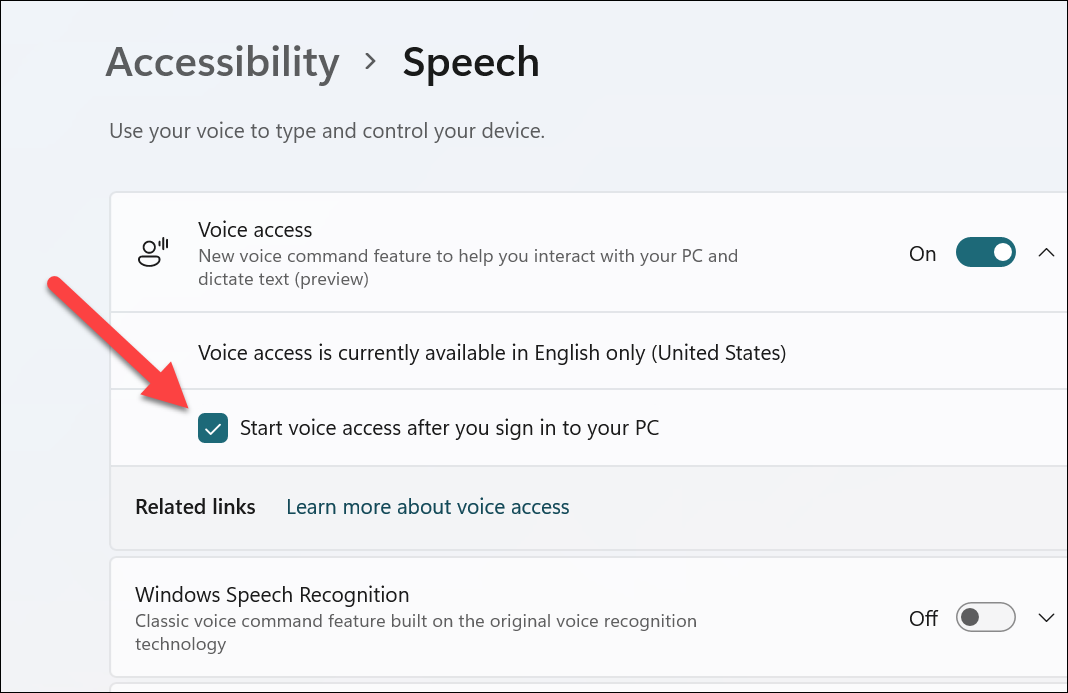
Step 6: When you enable Voice Access for the first time, you'll be prompted to download a speech model. Click on the Download button in the Voice Access banner at the top of your screen.
Note: Ensure you are connected to the internet to download the speech package.
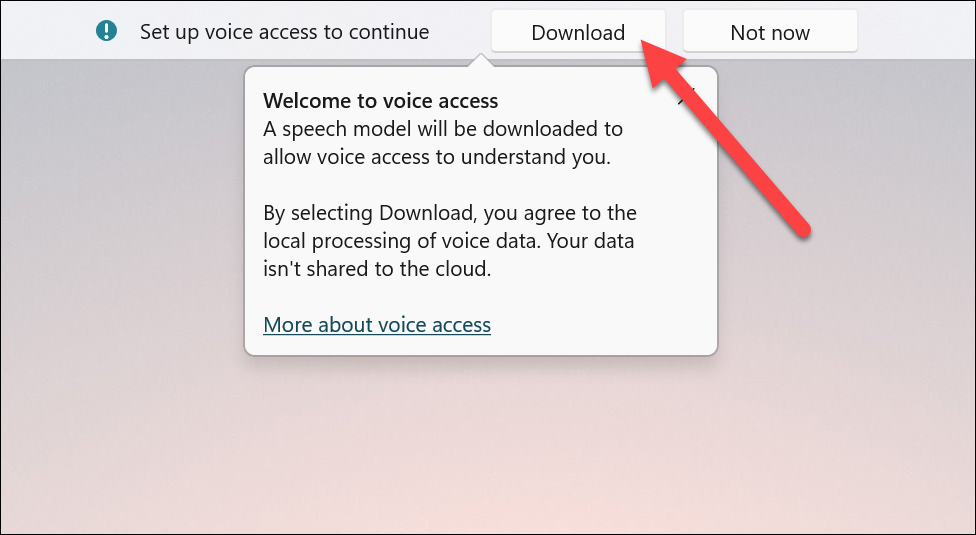
Step 7: After the download, the Voice Access guide will appear. Under the Microphone section, select your preferred microphone from the list or choose to Add new microphone. Click the arrow at the bottom right to continue.

Step 8: On the next screen, select Start Guide to access an interactive tutorial that will help you understand the basics of using Voice Access.
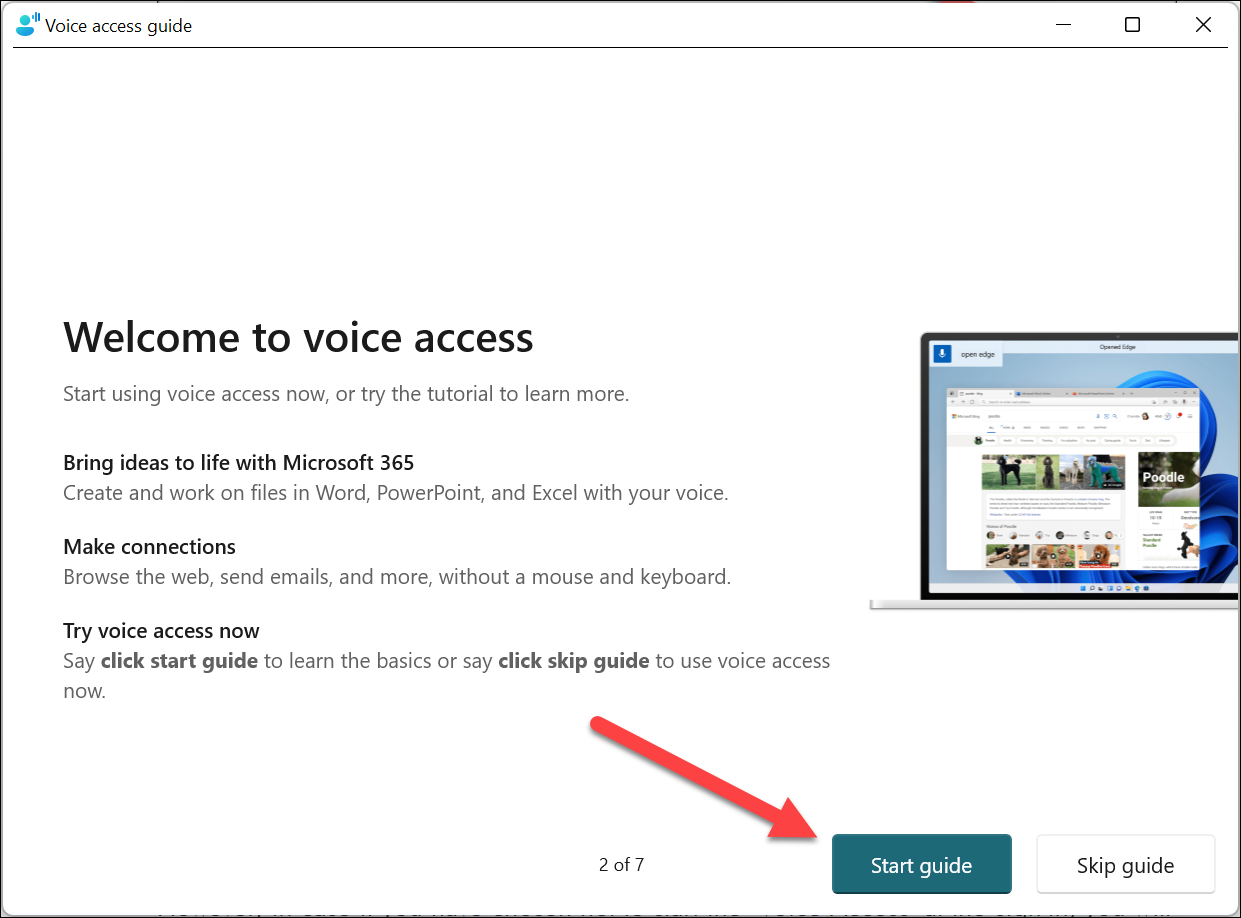
Navigating your PC with Voice Access
Once Voice Access is enabled, you can begin controlling your PC using voice commands. This feature allows for seamless interaction with applications, navigation through the system, and performing searches without the need for physical input devices.
If you didn't set Voice Access to start at sign-in, you can manually turn it on by pressing Alt+Shift+C on your keyboard.
To open applications, simply say "Open [application name]", such as "Open Edge" or "Open Chrome".
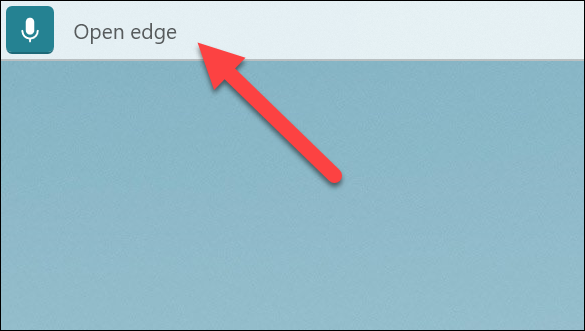
You can switch between apps, minimize the current window, or open the task switcher using commands like "Switch to [application name]" or "Minimize window".
To interact with on-screen elements, say "Show numbers" to display numbers next to all clickable items. Then, say "Click [number]" or "Double-click [number]" to select the desired item.
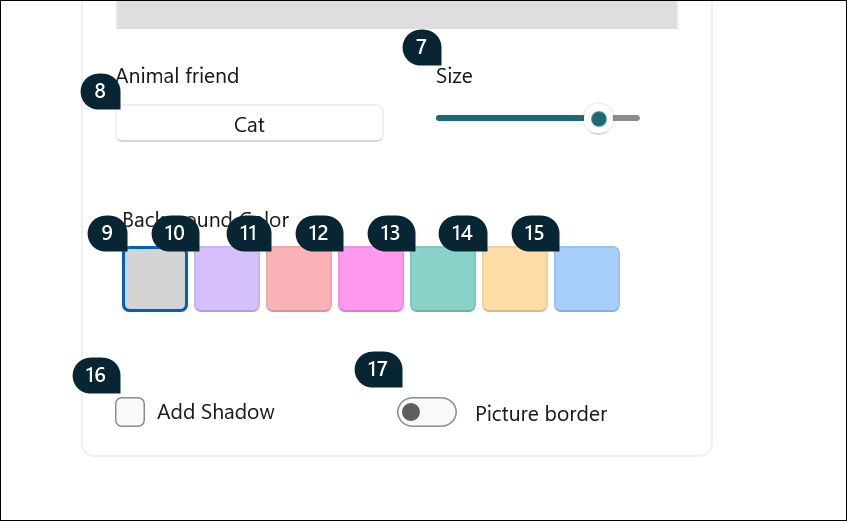
For quick web searches, you can say "Search on [search engine] for [query]". For example, "Search on Google for Stoicism" will display search results for that term.
Below is a comprehensive list of commands to help you make the most of Voice Access on your Windows 11 PC.
Manage Voice Access and microphone
| Action | Voice command |
| Activate Voice Access listening | "Voice access wake up" / "Unmute" |
| Put Voice Access to sleep | "Voice access sleep" / "Mute" |
| Turn off the microphone | "Turn off microphone" |
| Disable Voice Access | "Turn off Voice Access" |
| View available commands | "What can I say" |
| Open Voice Access settings | "Open Voice Access settings" |
| Access Voice Access help | "Open Voice Access help" |
| Launch the Voice Access tutorial | "Open Voice Access guide" |
| Switch to commands-only mode | "Commands mode" |
| Switch to dictation-only mode | "Dictation mode" |
| Return to default mode (commands and dictation) | "Default mode" |
Control app windows
| Action | Voice command |
| Open an application | "Open [app name]" (e.g., "Open Chrome") |
| Close an application | "Close [app name]" |
| Maximize or minimize the current window | "Maximize window" / "Minimize window" |
| Restore a minimized window | "Restore window" |
| Open the task switcher | "Show task switcher" |
| Navigate to the desktop | "Go to desktop" |
| Search the web using a browser | "Search on [search engine] for [query]" (e.g., "Search on Google for Stoicism") |
| Snap the window to a side or corner | "Snap window to [direction]" (e.g., "Snap window to top-left") |
Note: [search engine] can be Google, Bing, or YouTube. [direction] can be left, right, top-left, top-right, bottom-left, or bottom-right.
Screen overlay interaction
| Action | Voice command |
| Display number overlays | "Show numbers" |
| Show numbers on a specific app or window | "Show numbers on [app name]" (e.g., "Show numbers on Notepad") |
| Hide number overlays | "Hide numbers" / "Cancel" |
| Select an item using its number | "Click [number]" (e.g., "Click 4") |
| Display grid overlay | "Show grid" |
| Remove grid overlay | "Hide grid" / "Cancel" |
| Undo the last grid action | "Undo" / "Undo that" |
| Mark an item to drag | "Mark" or "Mark [number]" (e.g., "Mark 4") |
| Drag the marked item to a location | "Drag" |
Perform mouse and keyboard actions
| Action | Voice command |
| Select an item | "Click" or "Tap" |
| Left-click or right-click an item | "Left-click" / "Right-click" |
| Double-click or triple-click an item | "Double-click" / "Triple-click" |
| Press a key or combination of keys | "Press [key]" or "Press [key1] [key2]" (e.g., "Press Ctrl Shift Esc") |
| Press a key multiple times | "Press [key] [number] times" (e.g., "Press Shift 5 times") |
| Hold down a key | "Press and hold [key]" (e.g., "Press and hold Shift") |
| Release a held key | "Release [key]" (e.g., "Release Shift") |
| Continuously move the mouse pointer | "Move mouse [direction]" (e.g., "Move mouse top-left") |
| Stop moving the mouse pointer | "Stop" or "Stop moving" |
| Dismiss menu flyouts (e.g., context or drop-down menus) | "Dismiss" |
If you ever need to see the full list of commands while using Voice Access, simply say "What can I say", and the command list will appear on your screen.
Voice Access in Windows 11 offers a convenient way to operate your PC using voice commands, enhancing both accessibility and productivity. By familiarizing yourself with the available commands, you can navigate your system effortlessly without relying on traditional input devices.


